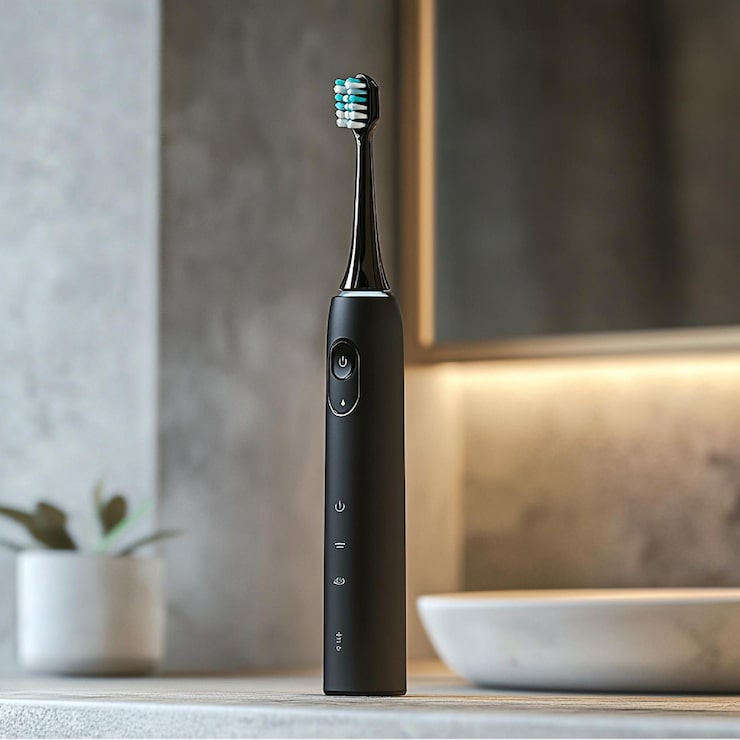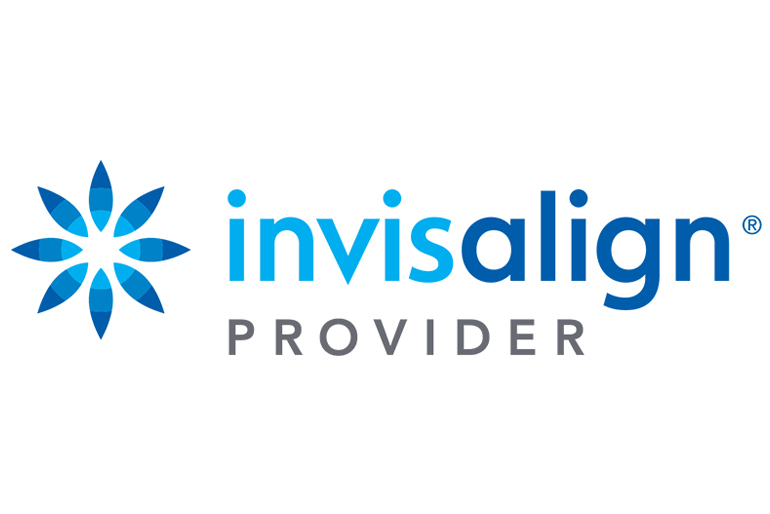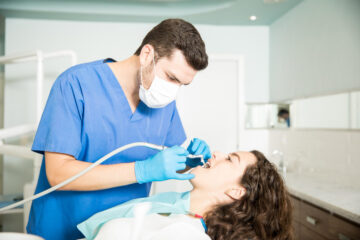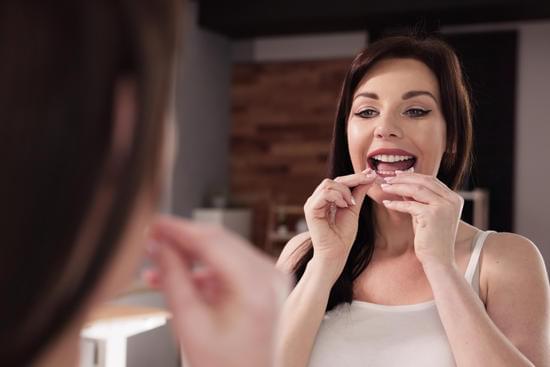
Ever stood in the oral care aisle wondering if you should ditch your trusty manual toothbrush for an electric one? You’re not alone. With brands like Perfora electric toothbrush gaining popularity and dental professionals increasingly recommending powered brushes, it’s time to separate marketing hype from scientific fact.
The short answer? Yes, electric toothbrushes are generally better for most people. But before you rush to make the switch, let’s dive deep into the why, how, and what you need to know to make the smartest choice for your oral health.
The Science Behind Electric Toothbrushes
Electric toothbrushes aren’t just a fancy gadget – they’re backed by solid research. Multiple studies have shown that electric toothbrushes remove significantly more plaque than manual brushes. Here’s what the numbers tell us:
| Benefit | Manual Toothbrush | Electric Toothbrush |
|---|---|---|
| Plaque Removal | 42% average reduction | 65-70% average reduction |
| Brushing Strokes per Minute | 300-400 strokes | 6,000-40,000 oscillations |
| Gingivitis Reduction | Moderate improvement | 38% better reduction |
| User Compliance | Varies widely | Built-in timers improve consistency |
The key difference lies in the mechanics. While your manual brush relies entirely on your technique and energy, electric toothbrushes do most of the work for you. This is particularly beneficial for people who struggle with proper brushing technique or have limited mobility.
Breaking Down the Benefits: Why Electric Wins
Superior Plaque Removal
The most significant advantage of electric toothbrushes is their superior cleaning power. The rapid oscillating or sonic movements break up plaque more effectively than manual brushing. This means:
- Better bacterial disruption: High-frequency movements disturb biofilm formation more effectively
- Consistent cleaning power: No fatigue-related decline in brushing effectiveness
- Improved gum line cleaning: Better access to hard-to-reach areas where plaque accumulates
Built-In Smart Features
Modern electric toothbrushes come packed with features that transform your brushing routine:
- 2-minute timers: Ensure you brush for the dentist-recommended duration
- Quadrant timers: Help you spend equal time on each section of your mouth
- Pressure sensors: Prevent over-brushing that can damage enamel and gums
- Multiple brushing modes: Customize your clean based on your specific needs
Easier for Everyone
Electric toothbrushes level the playing field when it comes to oral hygiene:
- Reduced technique dependency: Less reliance on perfect manual dexterity
- Great for seniors: Easier grip and less arm movement required
- Helpful for children: Fun factor increases compliance with brushing routines
- Beneficial for people with disabilities: Requires less fine motor control
The Manual Toothbrush Case: When Traditional Works
Before we crown electric toothbrushes the ultimate winner, let’s acknowledge where manual brushes still shine:
Cost-Effectiveness
| Factor | Manual Toothbrush | Electric Toothbrush |
|---|---|---|
| Initial Cost | $1-5 | $25-300 |
| Replacement Heads | $1-5 (whole brush) | $3-10 per head |
| Annual Cost | $4-20 | $40-120 |
| Lifespan | 3-4 months | 3-5 years (handle) |
Convenience and Portability
Manual toothbrushes win hands-down when it comes to:
- Travel convenience: No charging cables or cases needed
- Reliability: No risk of battery death or technical malfunctions
- Simplicity: No learning curve or mode selection required
- Availability: Can be replaced anywhere, anytime

Popular Electric Toothbrush Technologies Explained
Understanding the different technologies can help you choose the right electric toothbrush:
Oscillating-Rotating Technology
- How it works: Round brush head rotates back and forth
- Speed: 3,000-9,000 oscillations per minute
- Best for: Thorough plaque removal and gum stimulation
- Popular brands: Oral-B series
Sonic Technology
- How it works: Brush head vibrates at high frequency
- Speed: 15,000-40,000 brush strokes per minute
- Best for: Gentle cleaning and stain removal
- Popular brands: Philips Sonicare, Perfora electric toothbrush
Ultrasonic Technology
- How it works: Uses ultrasonic waves beyond audible range
- Speed: 1.6 million movements per minute
- Best for: Breaking down bacteria and biofilm
- Note: Less common and more expensive
What Dental Professionals Actually Recommend
When you visit a dental clinic in Kharadi, you’ll likely hear professionals advocating for electric toothbrushes. Here’s why:
Clinical Evidence
Dentists base their recommendations on peer-reviewed research showing:
- 21% better plaque removal compared to manual brushes
- 11% reduction in gingivitis after three months of use
- Improved patient compliance with recommended brushing duration
- Better oral health outcomes in long-term studies
Real-World Patient Outcomes
Dental professionals observe that patients using electric toothbrushes typically show:
- Cleaner teeth at routine checkups
- Healthier gums with less inflammation
- Better brushing habits thanks to built-in features
- Reduced need for intensive cleanings
Choosing the Right Electric Toothbrush: A Buyer’s Guide
With so many options available, from budget-friendly models to premium brands like Clippy Smile, here’s what to consider:
Essential Features to Look For
| Feature | Why It Matters | Budget Option | Premium Option |
|---|---|---|---|
| 2-Minute Timer | Ensures adequate brushing time | ✓ | ✓ |
| Pressure Sensor | Prevents enamel damage | Sometimes | ✓ |
| Multiple Modes | Customizable cleaning | Limited | 3-5 modes |
| Battery Life | Convenience factor | 1-2 weeks | 2-4 weeks |
| Replacement Head Cost | Long-term affordability | $3-5 | $8-12 |
Budget-Friendly vs. Premium: What’s the Difference?
Budget Options ($25-75):
- Basic oscillating or sonic technology
- Essential timer function
- 1-2 brushing modes
- Standard battery life
- Perfect for first-time users
Mid-Range Options ($75-150):
- Advanced cleaning modes
- Pressure sensors
- Better battery life
- App connectivity (sometimes)
- Good balance of features and price
Premium Options ($150-300+):
- Multiple brush head types included
- Advanced app integration
- Superior battery life
- Premium materials and design
- Additional accessories and travel cases
Making the Switch: What to Expect
If you’re transitioning from manual to electric, here’s what you should know:
The First Week
- Tickling sensation: Normal as you adjust to vibrations
- Slight gum irritation: Should subside as gums get healthier
- Learning curve: Getting used to letting the brush do the work
After One Month
- Cleaner feeling teeth: Noticeable improvement in mouth feel
- Potential gum improvement: Less bleeding and inflammation
- Established routine: Comfortable with new brushing pattern
Long-Term Benefits
- Better dental checkups: Less plaque buildup between visits
- Improved gum health: Reduced risk of gingivitis and periodontitis
- Enhanced oral hygiene habits: Built-in features encourage consistency
Special Considerations for Different Users
For Children
Electric toothbrushes can be game-changers for kids:
- Fun factor increases compliance
- Built-in timers teach proper duration
- Some models play music or have cartoon characters
- Smaller brush heads designed for young mouths
For Seniors
Aging brings unique oral health challenges that electric brushes address:
- Reduced manual dexterity requirements
- Easier grip handles available
- More effective cleaning with less effort
- Helpful for arthritis or limited mobility
For People with Braces
Electric toothbrushes can be particularly beneficial for orthodontic patients:
- Better plaque removal around brackets
- Specialized orthodontic brush heads available
- Gentle modes to protect sensitive areas
- Consistent cleaning pressure
The Bottom Line: Are Electric Toothbrushes Worth It?
The evidence is clear: electric toothbrushes offer superior cleaning power, better user compliance, and improved oral health outcomes for most people. While the initial investment is higher than manual brushes, the long-term benefits to your oral health make them a worthwhile investment.
However, the “better” toothbrush is ultimately the one you’ll use consistently and correctly. If you’re someone who already maintains excellent oral hygiene with a manual brush and visits your dentist in Kharadi regularly, you might not see dramatic improvements. But if you struggle with proper brushing technique, have mobility issues, or want to optimize your oral health routine, an electric toothbrush is likely worth the upgrade.
Quick Decision Framework:
Choose Electric If You:
- Want maximum plaque removal efficiency
- Struggle with proper brushing technique
- Have mobility or dexterity issues
- Desire smart features and guidance
- Can invest in long-term oral health
Stick with Manual If You:
- Have excellent brushing technique already
- Travel frequently without reliable charging access
- Prefer minimal complexity in your routine
- Are budget-conscious for the long term
- Have specific dental conditions requiring gentle brushing
Remember, whether you choose manual or electric, the most important factors remain consistency, proper technique, and regular professional cleanings. When you maintain good oral hygiene habits and visit establishments like Clippy Smile for regular care, you’re setting yourself up for a lifetime of healthy smiles.
Frequently Asked Questions
1. How long do electric toothbrush batteries typically last?
Most quality electric toothbrushes offer 1-4 weeks of battery life on a single charge, depending on usage frequency and model. Premium models like those recommended by dental professionals at clinics often feature longer battery life, with some lasting up to a month with twice-daily use.
2. Can electric toothbrushes damage your teeth or gums?
When used properly, electric toothbrushes are gentler on teeth and gums than aggressive manual brushing. However, applying too much pressure can cause damage. That’s why many modern electric toothbrushes include pressure sensors that alert you when you’re brushing too hard, protecting your enamel and gum tissue.
3. Are electric toothbrushes safe for people with dental work like crowns or fillings?
Yes, electric toothbrushes are generally safe for people with dental work. In fact, many dentist in Kharadi recommend electric brushes for patients with crowns, bridges, or fillings because they provide more consistent, gentle cleaning around dental work. Always consult your dental professional about the best brushing technique for your specific situation.
4. How often should I replace electric toothbrush heads?
Replace electric toothbrush heads every 3-4 months, or sooner if the bristles become frayed. This timeline is similar to replacing manual toothbrushes. Some brands like Perfora electric toothbrush models have indicator bristles that fade to remind you when it’s time for a replacement.
5. Do I need to use special toothpaste with an electric toothbrush?
No special toothpaste is required for electric toothbrushes. You can use your regular fluoride toothpaste. However, you might find you need less toothpaste since electric brushes create more foam and distribute paste more effectively throughout your mouth.
6. Can children use adult electric toothbrushes?
While children can use adult electric toothbrushes, it’s better to choose models designed specifically for kids. Children’s electric toothbrushes have smaller brush heads, gentler vibrations, and often include fun features that encourage proper brushing habits. Many dental clinic in Kharadi staff recommend starting kids with electric brushes early to establish good oral hygiene routines.
7. What's the difference between sonic and oscillating electric toothbrushes?
Sonic toothbrushes use high-frequency vibrations (15,000-40,000 strokes per minute) and rely on fluid dynamics to clean teeth, while oscillating brushes use circular rotating motions (3,000-9,000 oscillations per minute). Both are effective, but sonic brushes tend to be gentler and better for sensitive teeth, while oscillating brushes often provide more thorough plaque removal. Brands like Clippy Smile offer both technologies to suit different preferences and needs.




